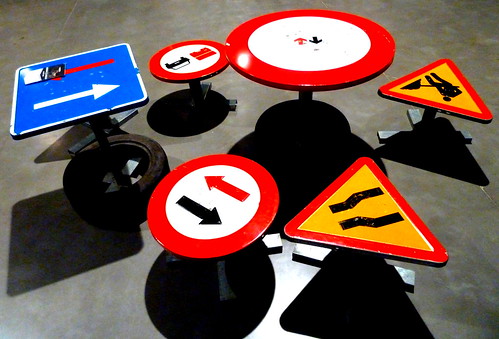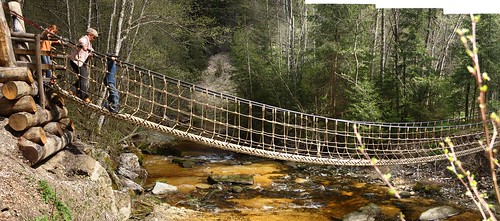22nd Sunday in Ordinary Time (C)
Readings: Ecclesiasticus 3:19-21,30-31; Psalm 67:4-7,10-11; Hebrews 12:18-19,22-24; Luke 14:1,7-14
Picture: cc Noel Cosgrave
My dear friends, do you know what a social climber is? I’m sure you do, right? It’s the kind of person who does whatever it takes to get ahead in life. I believe the Singlish word for it is atas. High class. Not that all high class people are social climbers. They’re not. But social climbers are people who try their very best to be and to look atas.
And one way to do this is, of course, by networking. Rubbing shoulders with the right crowd. All those people whom the climber believes can help him or her to climb higher and faster. Usually people already perceived as being atas. High class contacts that the climber carefully cultivates. For example, by visiting the places they visit. Dressing the way they dress. Behaving the way they behave.
But, as you know, this is done not necessarily because the climber really likes all these people. On the contrary, the climber may envy them. Even detest them. These contacts are cultivated not for their own sake. But only as means to an end. They are seen as so many rungs on a ladder. Stepping stones to help the climber reach the top. And that’s all that the climber really wants. To get to the top. That’s the ambition of the climber’s heart.
I mention this because I believe it is possible to misread our Mass readings for today. To see them as nothing more than an instruction manual for social climbers. For even though the readings are all about being humble, they do seem to encourage us to do so only in order to get ahead in life. So the first reading says be gentle in carrying out your business… The greater you are, the more you should behave humbly. But why? So that you will be popular. So that you will be better loved than a lavish giver. And so that you will find favour with the Lord.
In the gospel too, Jesus tells a parable advising guests at a wedding feast to take the lowest place. But why? So that your host may invite you higher. And so that everyone with you at the table will see you honoured. But then doesn’t all this look like nothing more than a sophisticated strategy for climbing the social ladder? I only pretend to take the lowest place. But my sights are really set much higher.
Even Jesus’ advice to his host can be misunderstood in a similar way. When we throw a party, why should we invite the poor, the crippled, the lame, and the blind? Is it because we really care about them? Well, it seems not. For the reason given is that repayment will be made to you when the virtuous rise again. So it may appear as if we invite the poor only so that we ourselves can be made rich. But then won’t we be using the poor the way social climbers may use the rich? Simply as rungs on a ladder? Stepping stones to reach the top? Is this what it means to be truly humble?
I think we can probably all agree that the answer is no. This is not what true humility looks like. True humility is not just about pretending to take the lowest place. Pretending to welcome the poor. Only so that we can ourselves be made rich. For when we do this, we continue to be driven by the same selfish ambition that motivates social climbers. Our concern is not really with the interests of the poor, much less with the will of God, but only with our own advancement. What is needed is a change of heart.
But this is something that is actually beyond our own strength. As the first reading tells us, there is no cure for the proud man’s malady, since an evil growth has taken root in him. We really do not have what it takes to make ourselves humble. Which is why we prayed the way we did in our opening prayer earlier. We asked the God of might, and the giver of every good gift, to put into our hearts the love of your name. We asked God to change our hearts. To replace our selfish ambition with a burning desire for God. This is the first step to true humility. A change of the contents of our hearts. A clearing out of selfish ambition. And a filling in with the love of God.
And the good news for us is that God has already answered our prayer. By sending us Jesus. Who emptied himself to become a human being like us. And who then humbled himself to accept a shameful death on the Cross. It is when we gaze upon the reality of the Lord’s painful sacrifice. It is when we gather to recall the mystery of his great love for us. That we allow God to change our hearts in the direction of true humility. Melting the hardness of our pride. And igniting in us the fire of God’s love.
But that’s not all. This change in the content of our hearts has an important practical effect on us. We begin to lose our anxious ambition for getting to the top. Why? Simply because we begin to feel at home in God. As we prayed in our responsorial psalm: In your goodness, O God, you prepared a home for the poor. By changing our hearts, God leads us home. God enables us to feel at home in whatever situation we might find ourselves. For our hearts remain always centred on God. As St. Augustine once wrote, You have made us for yourself, O God, and our hearts are restless until they rest in you.
The change of heart leads to a corresponding change in spiritual location. From selfish ambition to love of God. From anxious striving to peaceful homecoming. The second reading describes for us what this new spiritual location looks and feels like. What you have come to is Mount Zion and the city of the living God, the heavenly Jerusalem… You have come to God himself… and to Jesus, the mediator who brings a new covenant. More important, when we reach this spiritual home, we find a surprise waiting for us. For the reading tells us that in this new spiritual location, everyone is a ‘first-born son’. In other words, here, at home in God, everyone of us is an heir. We no longer need to climb. For we find ourselves already mysteriously at the very top.
A change of heart. A coming back home. A claiming our dignity as heir. Heart. Home. Heir. These are the real stepping stones to true humility. This is the authentic path. Not a climbing over others. But a laying down of one’s life for their sake. This is the path that the Lord himself walked. The path that leads to the heights of heaven. By first passing through the depths of the earth. This is the Christian approach to being truly atas.
Sisters and brothers, what must we do to continue walking along this path today?


